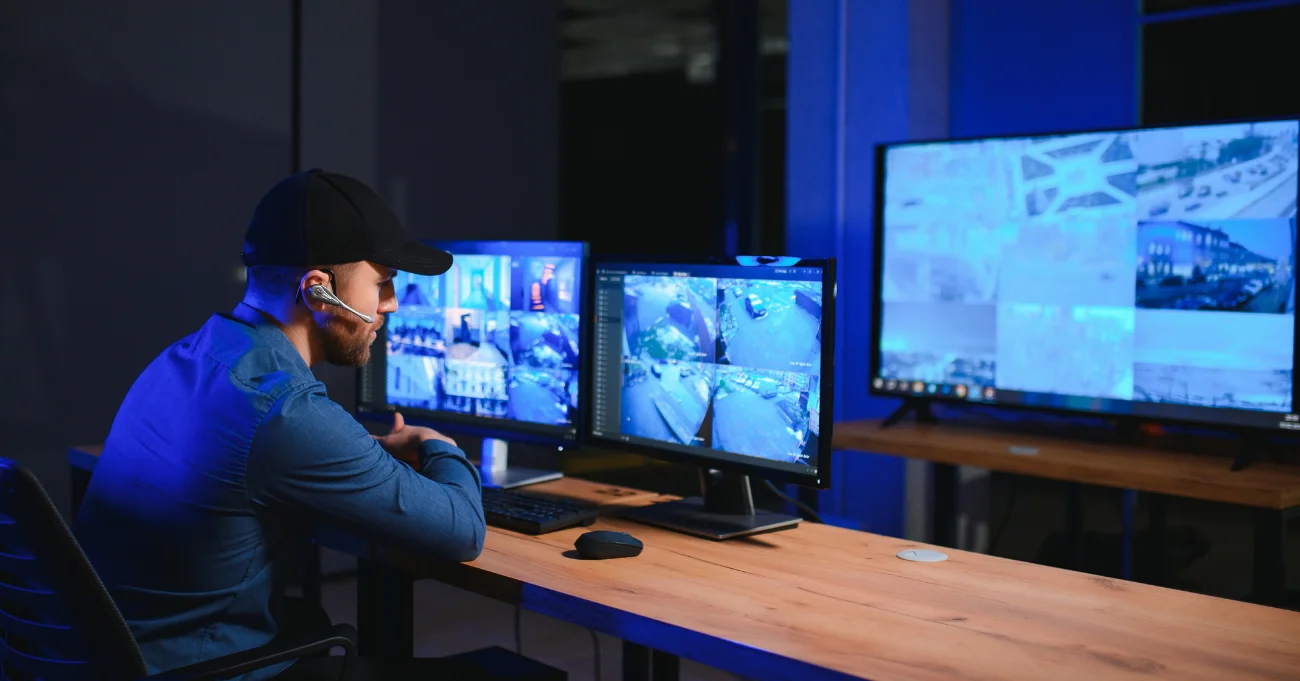If your cameras only help after the incident, they’re not security—they’re paperwork. Real prevention means your system notices risky behavior while it’s happening, gets a human to look, and nudges staff (or a guard) to intervene in seconds. This piece lays out a simple, practical way to do that with edge AI—minimal jargon, concrete steps, and a pilot you can run fast.
What “real-time” actually means (in plain language)
In loss prevention, speed wins. From the moment someone slips through a back door or lingers by a high-value shelf, you have a tiny window—often just a few seconds—to notice, verify, and act. That’s why teams push the “thinking” closer to the camera. Instead of sending every frame to the cloud and waiting on the internet, a small computer near your cameras does the first pass. Less distance, less waiting, quicker decisions.
You don’t have to build everything from scratch to test the workflow. Many retailers pair on-camera AI with human verification to see how real alerts behave, often leaning on AI-assisted live guard monitoring to shape escalation steps, talk-downs, and a human-in-the-loop that keeps false alarms in check without slowing response.
There’s a technical reason edge matters: placing compute near the sensor reduces backhaul and jitter, which helps you close the loop fast enough to prevent, not just document. You’ll find this rationale in NIST discussions of edge computing for time-sensitive workloads.
The simplest pipeline that actually deters theft
Think of the system as a tight loop: see → decide → act. Here’s the minimum you need to get results without a long build.
1) See: two good angles beat ten mediocre ones
Start with two IP cameras: one covering your entry/exit path, one on a high-risk zone (caged goods, back door, yard gate). Walk the space and ask, “From this angle, could I identify what’s happening without squinting?” If not, move the camera. Clear, stable views save more time later than any model tweak.
Quick win: Keep video smooth and consistent (moderate frame rate, no constant zoom). Stable inputs make smarter outputs.
2) Decide: simple rules over raw motion
A small computer near the cameras watches each frame. It looks for people, where they are, and how long they’re doing a thing. You don’t need exotic logic:
- “Person lingers by a locked case for 20+ seconds.”
- “Someone crosses a line into the closed stockroom.”
- “After hours, any person near the yard gate.”
Each event gets a confidence score. Low score? Just log it. Medium? Nudge a staff tablet. High? Pop an alert with a short clip so someone can act. If you don’t have in-house bandwidth to package the rules and UI, Aloa’s software development solutions outline how a partner can stand up a lean pilot and harden it over a few sprints.
3) Act: show a 10-second clip and make the next step obvious
When an alert fires, the operator (a floor lead, a guard desk, or a monitoring partner) sees a 10-second clip that tells the story—no detective work. Two buttons: Dismiss or Escalate. If escalated, your SOP kicks in: voice talk-down, ping a nearby associate, or after-hours patrol for breaches.
Design principle: Don’t make people scrub video. If they can decide in one glance, they’ll keep up—even on a busy shift.
Tuning without the headache: five habits that cut noise (and misses)
Your first pilot will alert too often in the wrong places and not enough where it counts. That’s normal. Use these habits to dial it in quickly.
1) Combine “what” and “how long”
A person near a shelf isn’t a risk by itself. “Person lingers near a locked case for 20 seconds” is a stronger signal. Time turns harmless moments into meaningful patterns.
2) Think in short stories, not snapshots
Send a short clip (a few seconds before and after the event), not a still image. People judge faster with context, and you’ll make better decisions about what to tighten or loosen next.
3) Respect the clock
What’s normal at noon is suspicious at 2 a.m. Tie your rules to business hours. Raise thresholds during busy periods; lower them when the store is closed. If you plan to roll this out to many locations, Aloa’s overview of IoT platform features will help you think ahead about health checks, updates, and device fleets.
4) Verify before you blare
False alarms waste time and erode trust. A field guide on false burglar alarms (funded by the U.S. Department of Justice’s COPS Office) explains why verification policies reduce unnecessary responses and improve outcomes; the same logic translates to retail monitoring when you require a quick human check before sirens or dispatch.
5) Let operators teach the system
Every Dismiss or Escalate should save two things: why and where. After a week, you’ll see patterns: one camera angle that creates noise, one zone that’s too sensitive, one calm time window. Change one thing at a time and measure the difference.
A 30-day pilot plan (you can actually follow)
You don’t need a moonshot. Prove it at one door or one aisle, then scale.
Day 1–5: Prep and placement
- Pick two cameras: exit path + high-value zone.
- Mount so that faces and hands are visible without odd angles.
- Put a small computer near the switch (same network as the cameras).
- Define three simple rules (examples above).
- Decide who will review alerts and who will act.
Day 6–10: First light
- Turn on alerts with conservative thresholds.
- Deliver alerts to one screen on the floor and, if after hours, to one screen at a monitoring desk.
- Capture clips, not just stills.
- Keep a short diary: what felt useful, what felt noisy.
Day 11–20: Trim the noise
- Shorten or raise dwell-time rules based on real footage.
- Tighten zones so traffic lanes don’t trigger alerts.
- Adjust schedules so that after-hours rules are stricter.
- Add a talk-down test (voice prompt from a speaker) for after-hours yard or back-door events.
Day 21–30: Prove the value
- Track three numbers in a basic sheet:
- Time-to-first-decision (camera timestamp → human dismiss/escalate).
- Operator throughput (events handled per hour at a comfortable pace).
- Intervention yield (% of escalations that led to an action—voice talk-down, staff check, door secured).
- Pull one short clip each week that shows a prevented incident or averted risk and share it with store leadership.
- Decide whether to roll to two more locations or add two more zones here.
If you need a single stat to back the business case, the National Retail Security Survey documents current theft and violence pressures—use it to secure a pilot budget in your most affected sites.
Build vs. buy: a sane middle path
You don’t have to choose “all custom” or “all vendor.” The sweet spot for most teams looks like this:
- Pilot with a vendor workflow to learn quickly. Use it to set a bar for response speed and verification quality—how fast clips reach a human, how false alarms are filtered, and what a clear escalation script sounds like.
- Productize the parts you need to own. Over time, wrap camera ingest, event scoring, and alerting in a lightweight service with health checks and an API.
- Integrate, don’t reinvent. Route events into the tools your team already uses for incidents and shift comms. If you’re thinking about how to keep the data layer tidy, Aloa’s guide to API frameworks will help you pick patterns that won’t box you in later.
Practical tips that save time (and headaches)
- Angles beat algorithms. If glare or obstructions make the clip unclear, fix the mount before you tweak the rules.
- One alert, one action. Each alert should imply a next step: talk-down, staff check, or call. If the action isn’t obvious, rewrite the rule.
- Short clips win. Ten seconds is enough for a human to decide. Longer clips slow people down.
- Name zones in plain English. “Back Door Threshold,” not “Zone 7.” It speeds training.
- Document your schedule. Write business hours and exceptions (overnight inventory, deliveries). Tie the rules to that schedule.
- Keep an audit trail. For every Dismiss/Escalate, save who, what, and why. You’ll use it to justify tuning and show progress.
- Respect privacy. Mask restrooms and neighboring properties. Limit who can export clips. Keep retention short unless needed for a claim.
You don’t need a massive project to make cameras useful while incidents are happening. Start small: two cameras, a nearby computer, three simple rules, short clips, and a person who can act. Measure how long it takes to make a decision, cut the noise each week, and keep verification in the loop. Once one door or one aisle works, clone it to the next. You’ll spend less time reviewing footage after the fact—and more time stopping incidents before they turn into losses.

